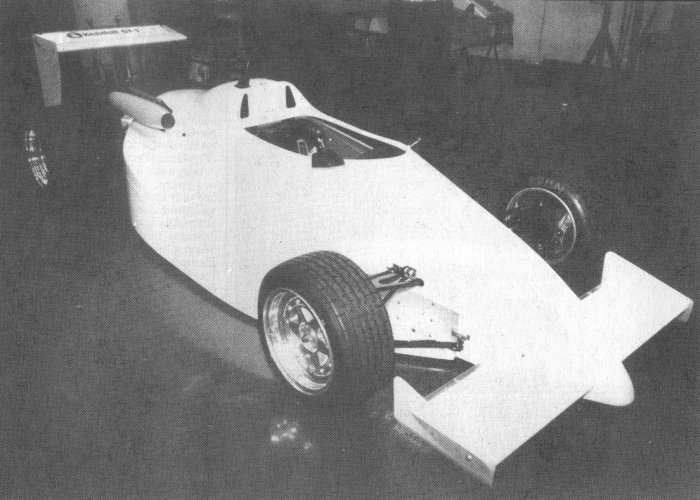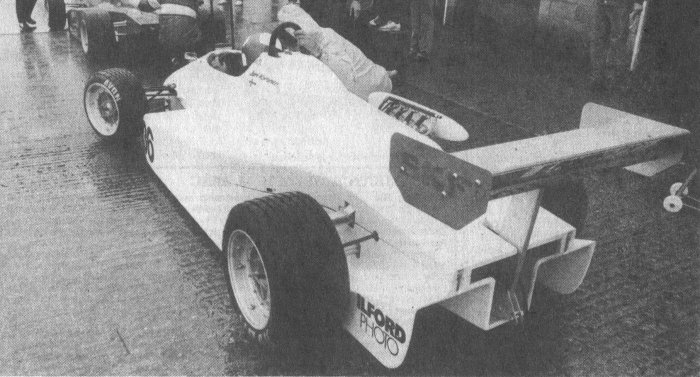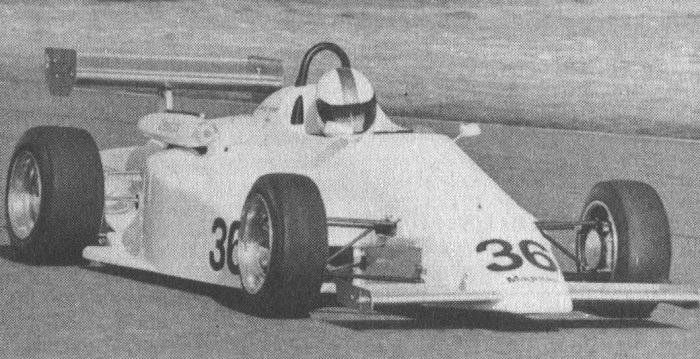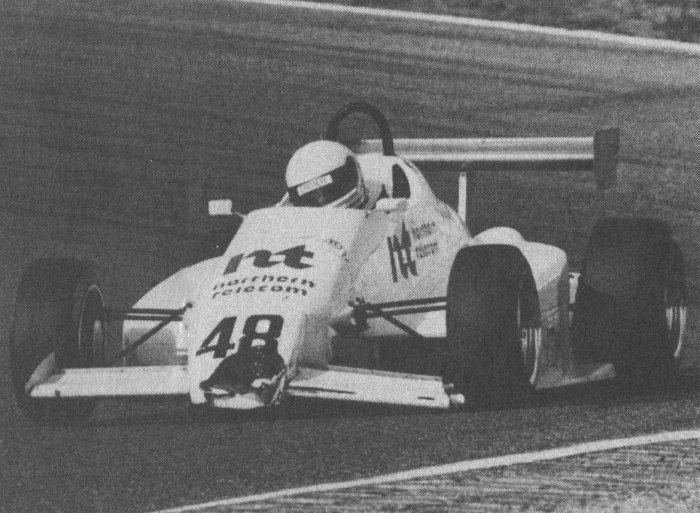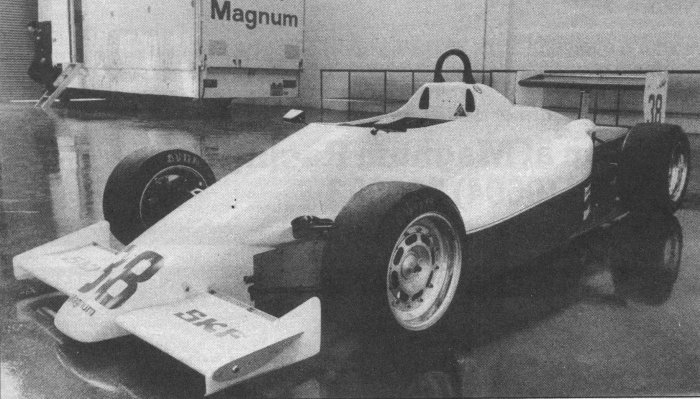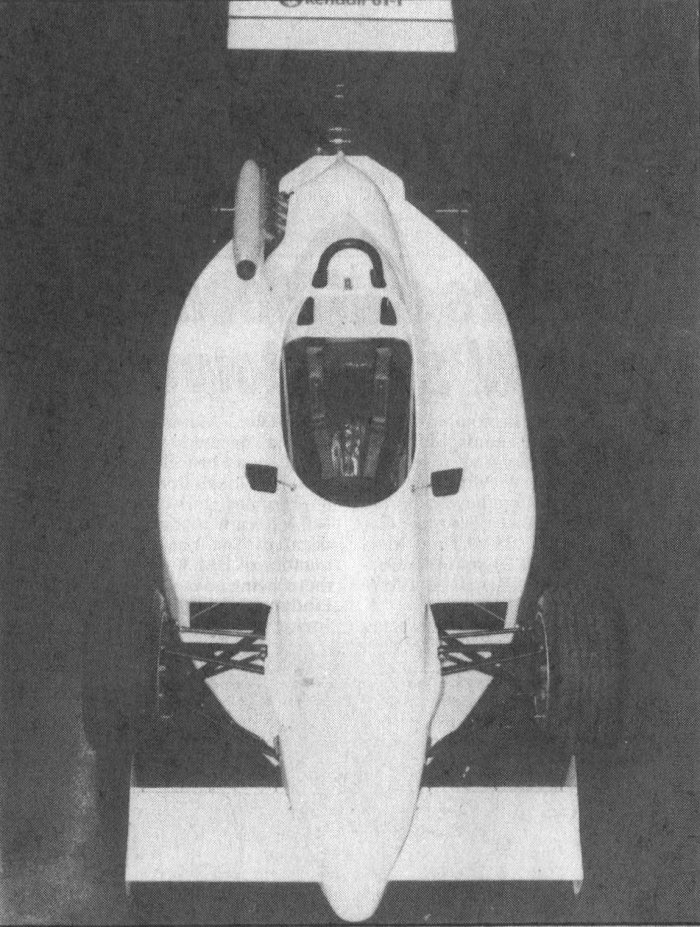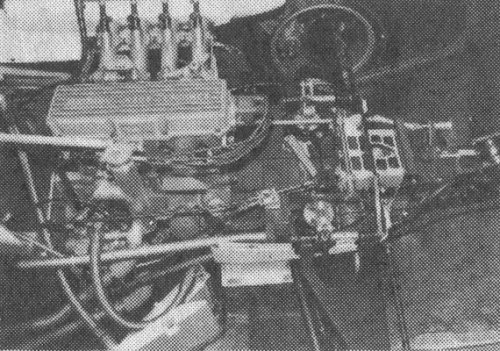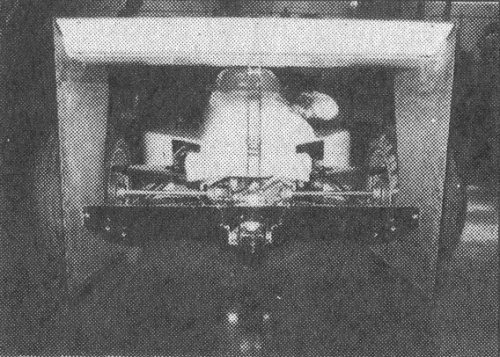Magnum
The first Magnum, the 813 (and the F Atlantic), version were produced by Northampton’s Automotive Designs Ltd but from the 823 onwards they were the the work of Magnum Racing Cars, the company formed by John Robinson. Magnum always had an excellent reputation for both the quality of their designs and the standard of workmanship and for several years they seemed on the brink of a breakthrough into the Ralt and then Reynard dominated formula. Sadly it was not to be and in 1987 Magnum ceased producing F3 racing cars.
1981
The 813 started life as a Len Bailey design for a F1 Theodore that never saw the light of day. Automotive Designs took the whole thing over in mid 1980, modified the car for F3 and produced the first chassis in autumn of the same year.
The chassis featured a narrow tub for maximum sidepod width, suspension was inboard with the rear spring/dampers sitting over the gearbox. The fuel was housed between the driver and engine and Toyota-power was used.
1982
The 823 was a reworked version of the 813 and initially results were disappointing but a lot of work saw it improving a David Leslie took a sixth place at Silverstone at the end of June. Later in the year an understandably frustrated Leslie left to drive a Ralt RT3 which stopped any further progress.
1983
1984
1985
The 853 was a new design for the new flat-bottomed regulations and it used a logical development of the tub of the previous year’s 843. The chassis used aluminium sheets over honeycomb bulkheads to give a combination of strength and rigidity. At the rear there was a tubular steel frame that acted as an engine bay. The front suspension employed pushrods to operate the inboard springs and Koni dampers. At the rear rockers, hanging from sandwich plates, operate the dampers which were installed on top of the gearbox, lower wishbones take care of the bottom location. Magnesium uprights were fitted all round, also made of magnesium was the steering rack. The fuel and oil tanks sit between the driver and engine with an oil cooler in the left hand sidepod.
Unfortunately the two Finns who drove the cars early season weren’t very good and their frequent offs soon exhausted their budgets. Paul Jackson carried out a lot of mid-season testing which made a big difference and at the end of the year Cor Euser took pole and fourth place at Zandvoort showing what might have been.
1986
The 863 looked very different to the 853 but it was still considered to be an evolutionary design. Now the chassis was composed of an aluminium honeycomb with four cast magnesium bulkheads in the footwell and the dash area which was claimed to give a “massive increase in torsional rigidity” as well as increased driver safety. Pushrod suspension was fitted front and rear operating Koni gas-filled dampers. The bodywork and rear wing were totally redesigned to give the highest levels of downforce with the flat bottom now fitted.
1987
The engine/rear suspension of the 873.
The 873 rear wing and diffuser.
Yet another evolutionary design, the major change was a switch to a Staffs Silent Gear gearbox in the interests of increased torsional rigidity, reduced friction and more compact size. The dampers were now located either side of the gearbox instead of on top to allow a flatter engine cover to be fitted. Newly fabricated uprights and revised rear suspension were also employed. A narrower nose was fitted to increase the front wing area. The whole car was reckoned to be 20kgs lighter than the 863.
Despite all the work that went into the new design the 873 never appeared at the races.
Drivers
John Robinson came up with a fresh design for the 833 and together with his three sons they produced a very effective package despite running on a very small budget. Suspension was based on that of the earlier cars although all new and continued to use the near-horizontal rear springs mounted above the gearbox. The new tub was built from honeycomb and was much narrower than that of the 823 in order to give the maximum venturi size. Most importantly the whole car underwent a substantial weight reduction to put it right on the minimum limit. One unique feature for F3 was that a Quaife differential was used in the transmission.
The car showed promise from the start although it lacked development due to financial constraints. Fresh sponsorship midway through the year allowed some testing and development and Leslie put the car on the front row at Silverstone three times, his best finish was a third at Oulton Park in September. In addition three fourth spots gave Leslie seventh in the British championship.
The 843 scored Magnum’s only F3 win when Bo Martinsson won twice including a first at Anderstorp. Sadly he was then thrown out of the Swedish championship for failing to present his car at scrutineering. The car itself was a modified and generally tidied up 833. Cor Euser drove the works car in the UK and despite trying hard his only result was a sixth at Magnum’s favourite circuit, Silverstone.
1981
1982
823
David Leslie.
1983
833
Cor Euser, David Leslie.
1984
843
Cor Euser, Bo Martinsson.
833
Mikael “Micko” Nordlander.
1985
853
Cor Euser, Paul Jackson, Jari Koiranen, Reima Soderman.
1986
853
Mark Goddard, Don Hardman.
863
Fulton Haight.
1987
